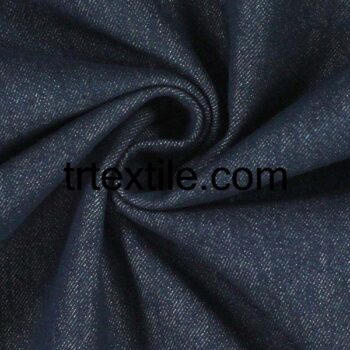Denim fabric, often referred to simply as denim, is a durable cotton twill fabric that has become synonymous with casual wear. It is a versatile fabric that is used to make a wide range of clothing items, from jeans and jackets to shirts and dresses. Denim is known for its ruggedness, comfort, and classic style, making it a staple in many people’s wardrobes.
The history of denim can be traced back to the late 18th century when it was first produced in France. The fabric was initially used for workwear due to its durability and strength. Over time, denim became popular among miners, cowboys, and other laborers who needed clothing that could withstand tough conditions. In the early 20th century, denim was adopted by the fashion industry and began to be worn as casual attire by people of all social classes.
Denim is made from cotton, which is a natural fiber that is known for its softness and breathability. The fabric is woven in a twill pattern, which gives it its signature diagonal ribbing. This weaving technique also makes denim strong and resistant to tearing, making it ideal for rugged use. Denim is typically dyed with indigo, a deep blue color that is known for its rich hue and fading properties. The dyeing process gives denim its iconic blue color, which has become synonymous with the fabric.
There are several different types of denim fabric, each with its own unique characteristics. Raw denim, also known as selvedge denim, is denim that has not been washed or treated after being dyed. This type of denim is known for its stiffness and crispness, and it develops unique fading patterns over time as it is worn and washed. Raw denim enthusiasts often prefer this type of denim for its authenticity and durability.
Another popular type of denim is stretch denim, which is made with a small percentage of elastane or spandex to give the fabric stretch and flexibility. This type of denim is popular for its comfort and ease of movement, making it ideal for skinny jeans and other form-fitting styles. Stretch denim is often blended with cotton to maintain the look and feel of traditional denim while adding stretch properties.
Denim fabric is also available in a wide range of weights, from lightweight denim that is suitable for warm weather to heavyweight denim that is durable and warm. The weight of denim is measured in ounces per square yard, with heavier denim typically being more durable and long-lasting. The weight of denim can vary depending on the type of cotton used, the weaving technique, and the dyeing process.
In addition to traditional blue denim, denim fabric is also available in a wide range of colors and finishes. White denim, black denim, and colored denim are all popular choices for those looking to add a unique twist to their wardrobe. Denim can also be distressed, bleached, or embroidered to create different textures and patterns. These finishes can give denim a worn-in look or a more polished appearance, depending on the desired style.
Overall, denim fabric is a versatile and timeless material that has stood the test of time. Its durability, comfort, and classic style make it a favorite among fashion enthusiasts and everyday consumers alike. Whether worn as jeans, jackets, or shirts, denim fabric is sure to remain a staple in the world of fashion for years to come.




